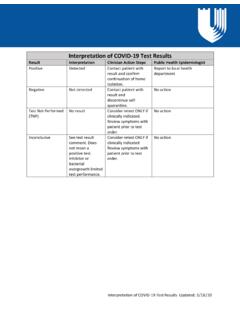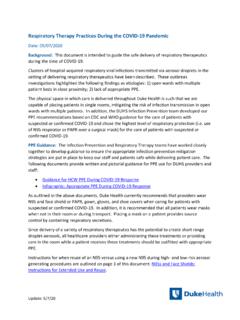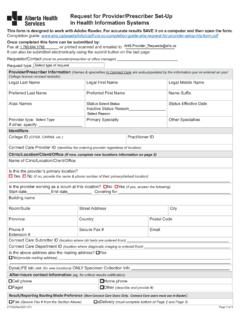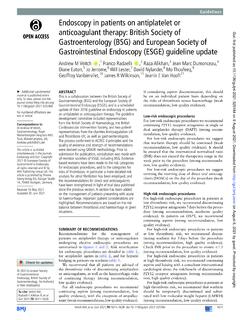Transcription of Guidance for Appropriate Repeat COVID-19 Testing
1 Update: 7/10/20 Guidance for Appropriate Repeat COVID-19 Testing Background: This document is intended to guide providers on Appropriate test utilization for COVID-19 PCR. Please note that all test orders available at DUHS (POC test, rapid test, pre-procedural test, inpatient test, outpatient test, and IP test) have gone through a rigorous validation process and that all results may be used as part of these Repeat Testing strategies. Repeat Testing After an Initial Negative Test Supporting document: Patient scenario Repeat test Indicated Patient s presentation is fully explained by another diagnosis No Patient s presentation is not explained by an alternate diagnosis AND high-risk clinical features Yes x 1 If 2 covid tests have been performed for the evaluation of the same clinical presentation and are negative, we do not recommend additional Testing for covid unless it has been recommended by Infectious Diseases Consultation.
2 If the clinical team still has concern for covid despite 2 negative test results, we recommend Infectious Diseases Consultation to determine if any additional evaluation is recommended and whether it is Appropriate to continue Special Airborne Contact Isolation for Clinical covid . If Clinical covid is suspected and Special Airborne Contact Isolation is continued, notify your facility s Infection Prevention Specialist to appropriately update the infection status flag in the patient s EPIC storyboard banner. Update: 7/10/20 Repeat Testing After a Positive Test Inpatient Setting Two negative tests obtained at least 10 days after onset of symptoms and > 24 hours apart are required to discontinue Special Airborne Contact Isolation using the Test-Based Criteria Acceptable sources: nasopharyngeal swab, BAL Supporting document: Patients who require retesting to remove Isolation Timing of surveillance test Repeat Test Patient will remain hospitalized > 10 days after onset of symptoms More than 10 days since symptom onset If first surveillance test is negative, Repeat second test in > 24 hours If first surveillance test is positive, Repeat surveillance test in 7 days Patient will be discharged to a skilled nursing facility, group setting, or requires outpatient dialysis If two consecutive tests are negative, notify your facility s Infection Prevention Specialist to clear the infection status in the patient s EPIC storyboard banner and discontinue Special Airborne Contact Isolation.
3 Repeat Testing After a Positive Test Readmissions Patients with confirmed COVID-19 who present for readmission within 28 days of their initial positive test should follow a test-based strategy for discontinuing Special Airborne Contact Isolation Two negative tests obtained at least 10 days after onset of symptoms and > 24 hours apart are required to discontinue Special Airborne Contact Isolation using the Test-Based Criteria Acceptable sources: nasopharyngeal swab, BAL Patients who require retesting to remove Isolation Timing of surveillance test Repeat Test Patients with a history of confirmed covid who are readmitted within 28 days of their initial positive test and have not already met Test-Based Criteria to Discontinue Special Airborne Contact Isolation Upon readmission If first surveillance test is negative, Repeat second test in > 24 hours If first surveillance test is positive, Repeat surveillance test in 7 days Update: 7/10/20 Repeat Pre-operative and Pre-procedural Testing Includes.
4 All perioperative procedures, bronchoscopy, transesophageal echocardiography, electrical cardioversion, electrophysiology procedures requiring general anesthesia, electroconvulsive therapy, upper and lower endoscopy , fluoroscopically guided enteric tube placements, and interventional radiology procedures requiring anesthesia or in patients with a tracheostomy Supporting documents: Patient scenario Recommended Timing of Test Repeat test Indicated Outpatient < 72 hours prior to procedure Yes, if most recent test > 72 hours from scheduled procedure Inpatient < 14 days, high-risk* for community exposure < 72 hours prior to procedure Yes, if most recent test > 72 hours from scheduled procedure Inpatient <14 days, not high risk* for community exposure < 72 hours prior to procedure Yes, if most recent test is > 7 days from scheduled procedure Inpatient > 14 days < 72 hours prior to procedure, ONLY if no prior test performed during admission No, if patient has had a prior negative test during the same admission and remains asymptomatic, Repeat test is not required Neonate < 3 days old, never left inpatient setting after birth No test required N/A *high-risk for community designation includes.
5 Known community exposure to a suspected or confirmed case within the last 14 days, coming from a congregate living facility.






